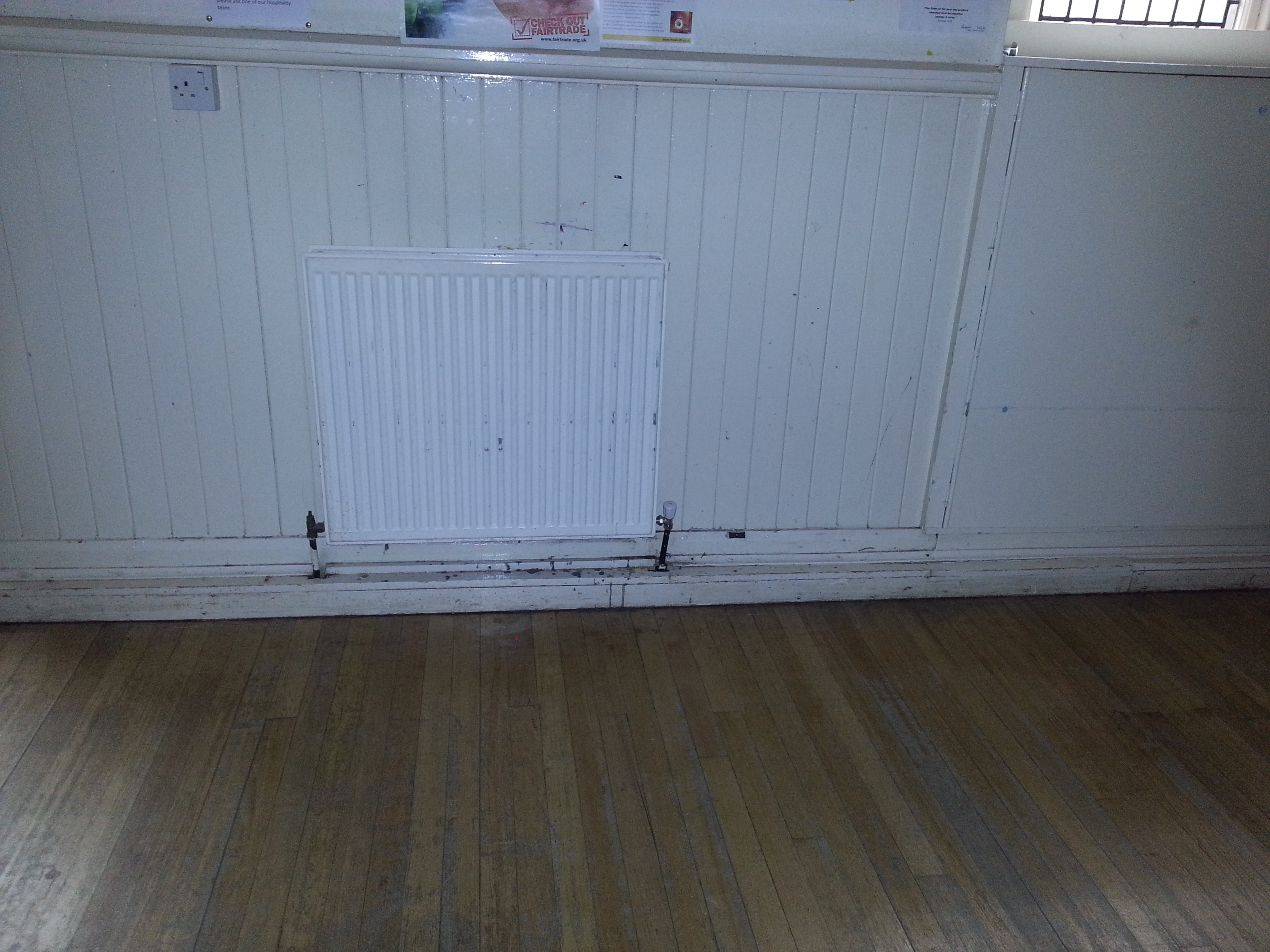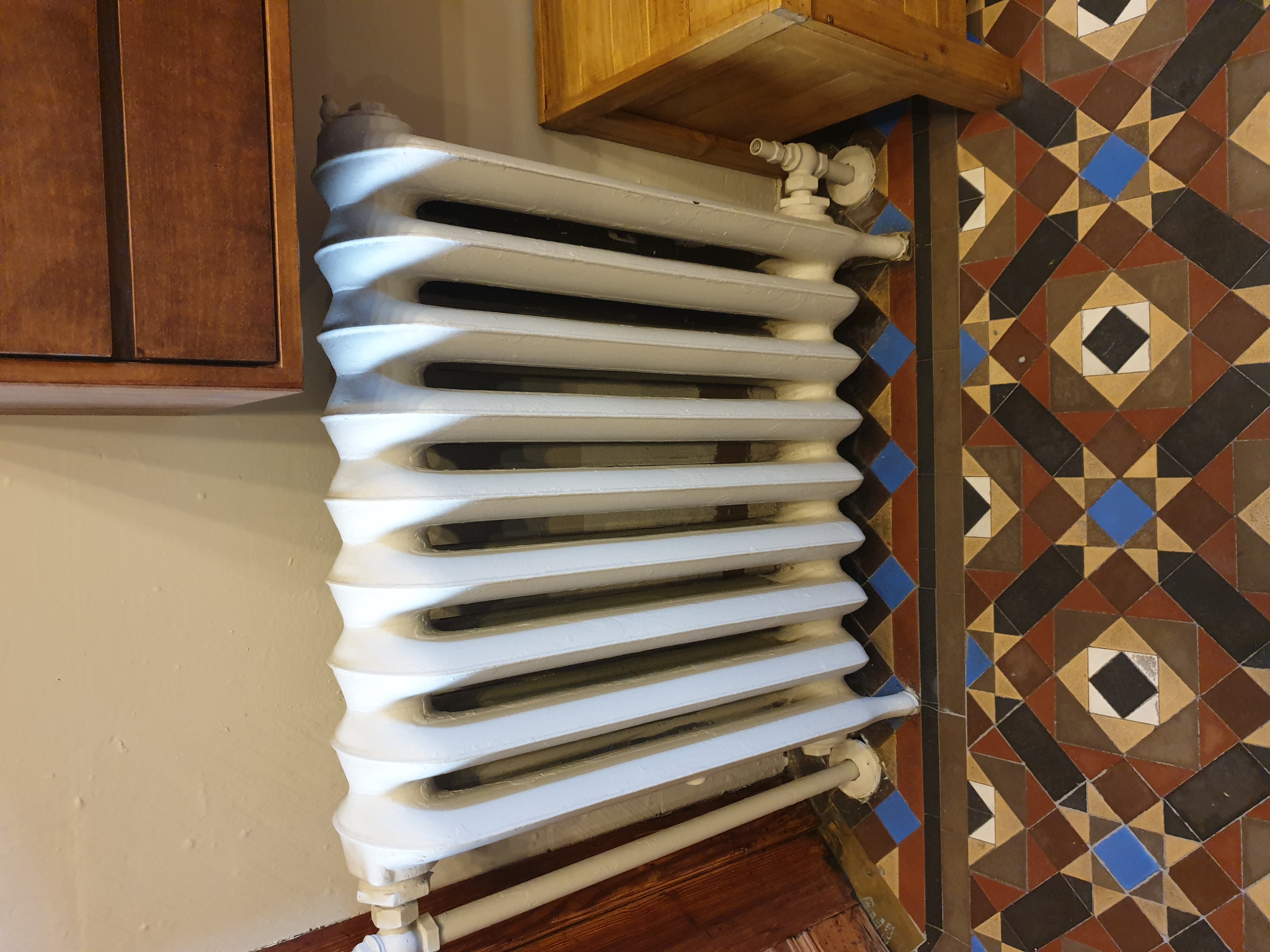Radiators#
Despite the name, radiators are mostly designed to heat the air.
On a modern “panel” radiator, air passes over or through the radiator from bottom to top and warms up as it goes. They might have one, two, or three panels. They heat the air faster if they have more panels, especially if they also have metal zigzag “fins” attached to the panels. Panel radiators heat up quickly, but they also cool down quickly.
Old-fashioned “column” radiators heat up slowly, but also cool down slowly. That’s great for smoothing out the heat, but it makes it harder to heat a space for a short time.
If your radiators seem oddly small but are very near some seats, that’s a clue that they are only intended to drift warm air past people to warm them up, not heat the air fully.


Radiators usually get warm because they are supplied with hot water from a boiler elsewhere in the building, but some radiators are electric instead.
Why are the radiators under the windows?
People are often puzzled about why radiators are usually found underneath windows. Glass is relatively cold, so windows cool the air when it touches them, making that air fall. If there’s a radiator under the window, the warm air rising from it will mix with the falling cold air and keep it from creating an annoying draught at ankle level across the floor of the room.
Occasionally in churches there are small electric heaters under the windows for the same reason. They are designed to be turned on shortly before people come into the space, not run for a long time to warm the space up.
